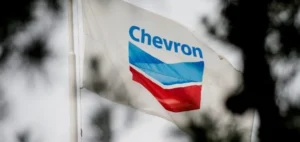Saudi Arabia’s national oil company, Saudi Aramco, announced a reduction in its official selling prices (OSP) for crude oil bound for Asia in December. This decision was well-received by Asian traders, who anticipated these adjustments due to several supply and demand factors in the region. The reduction primarily affects lighter crudes, while heavier crudes, potentially impacted by supply constraints, see more moderate reductions.
The OSP for the flagship crude, Arab Light, was reduced by 50 cents per barrel, setting a new price at $1.70 per barrel above the average Platts Dubai and Oman prices. Other light crudes, Arab Extra Light and Super Light, also saw reductions of 50 cents per barrel for December. Meanwhile, the heavier crudes, Arab Medium and Heavy, recorded a smaller decrease of 40 cents per barrel.
Market Expectations and Traders’ Reactions
Asian traders and end-users had anticipated cuts in the range of 40 to 70 cents for the lighter grades, a level consistent with the monthly change in the Dubai structure, a factor regularly considered by Aramco when adjusting its OSPs. The flagship Arab Light recorded a reduction slightly below market expectations, which had projected a decrease between 60 and 70 cents per barrel for the lighter crudes, due to fluctuating demand in the Asian region.
In October, the average cash Dubai price for the month registered a premium of $1.58 over futures contracts, marking a 45-cent drop from the previous month. This lower level reflects the decline in premiums on the Dubai market, thus influencing Aramco’s adjustments for its Asian sales.
Maintenance and Supply Prospects
Discussions around potential maintenance for certain Saudi crude fields, including medium and heavy crudes, continue to fuel speculation about a potential supply reduction. Although these operations have not been confirmed by Saudi Aramco, they could affect the supply for November and December trading cycles. Aramco is expected to confirm allocated volumes for December and January cargos in the coming weeks, further clarifying supply prospects for the months ahead.
Some market participants believe that the upcoming January loading period could be marked by an excess supply of some sour crude grades, fostering a bearish sentiment for that period. Recent Dubai Cash assessments have shown a significant weakening, with the spread against futures contracts reaching historically low levels for 2024.
Expected Improvement in Refining Margins in Asia
Despite the crude price downturn, the short-term outlook for Asian refiners appears to be improving. Demand for the end of the year, driven by travel and heating needs, is expected to support a gradual recovery in refining margins, following several months marked by particularly low margins.
Refining margins, calculated based on the Dubai-Singapore netback, averaged $4.67 per barrel for the month to November 5, up from an average of $1.65 in October and only 9 cents in September. Petroleum sector analysts and refiners in Asia are optimistic that this improvement will continue, with margins expected to remain higher over the coming months.






















